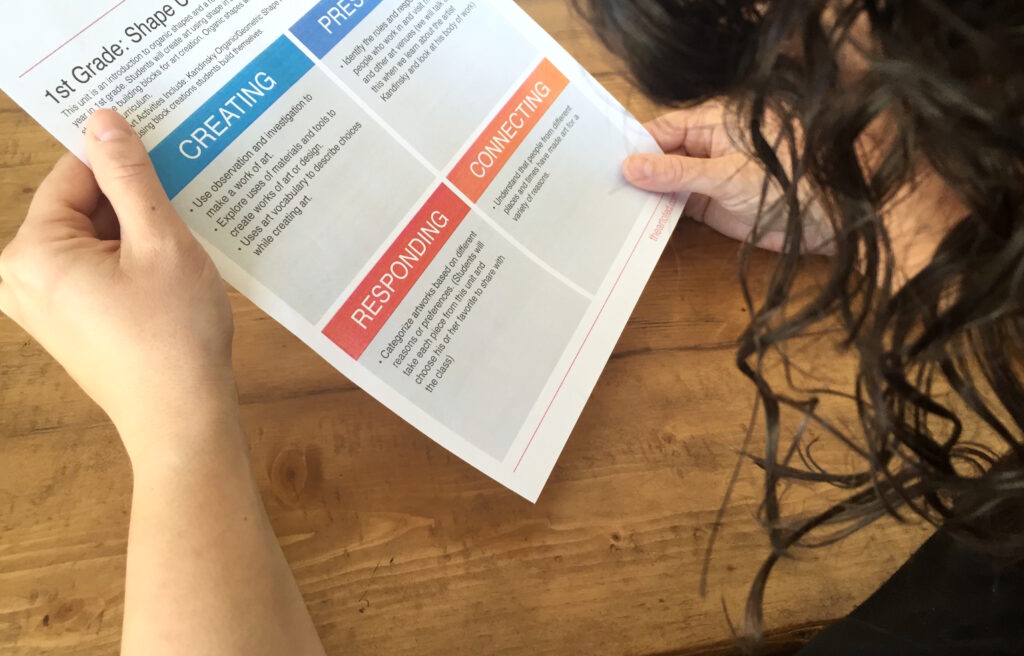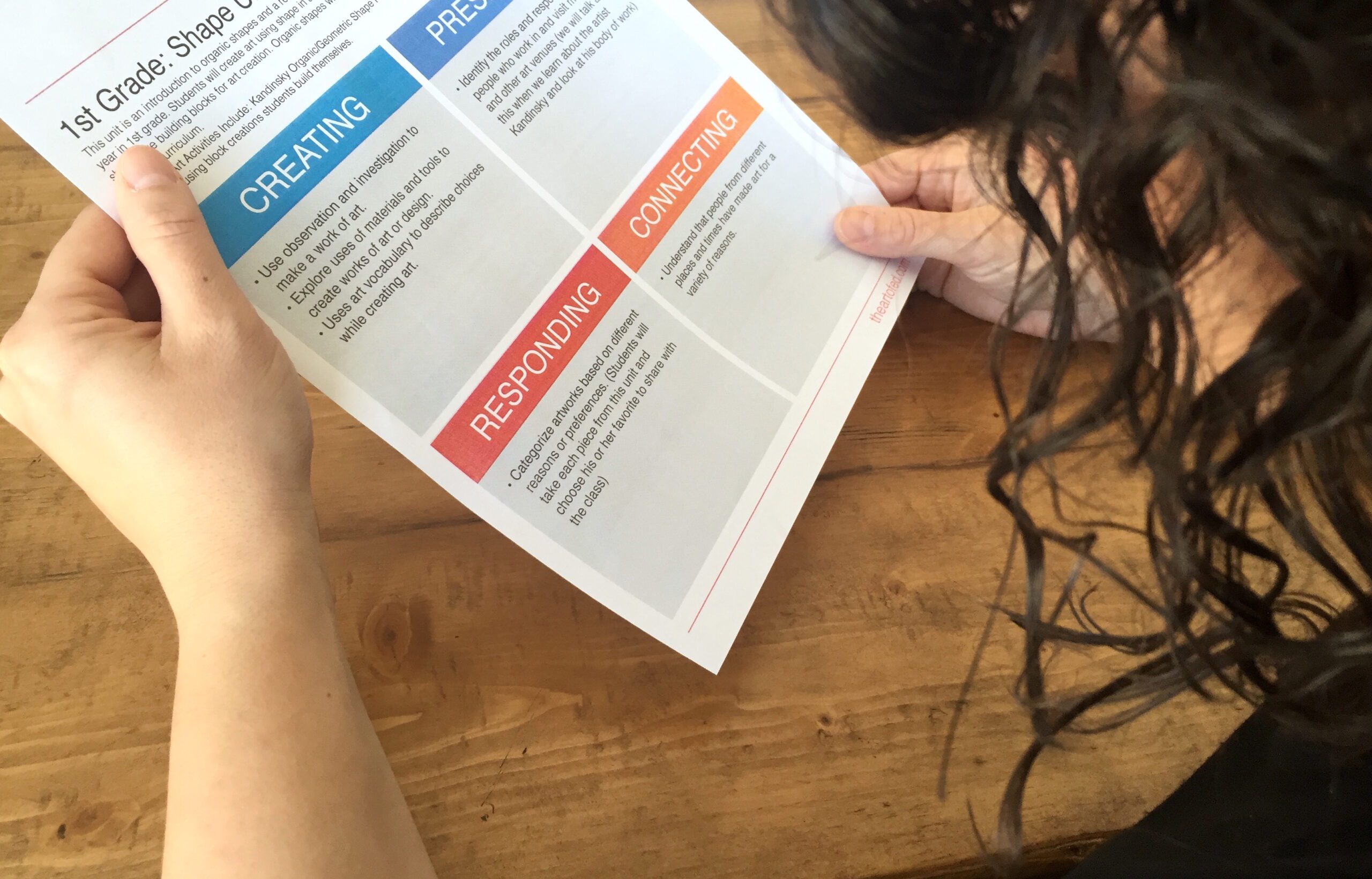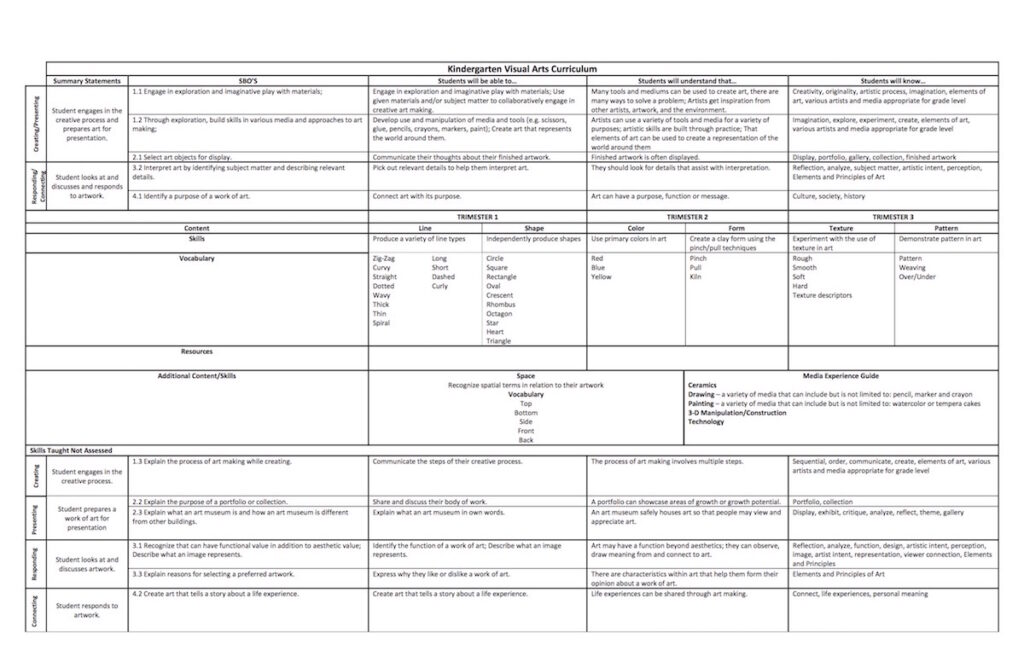A question we hear often is, “How are actual schools around the country using the National Visual Art Standards to inform their curriculum and change instruction?”
Today, let’s dig deep with a group of art teachers from Ankeny, Iowa who went through the process of revamping their curriculum and report card standards to match the National Visual Art Standards. This group lived to tell the tale. Two of its members, Allison and Brooke, are sharing some helpful information today.
Although this particular group didn’t go through AOE’s Online course, Implementing the New Art Standards, like many teachers do to nail down the process, Allison and Brooke’s team came up with some innovative ideas that fit their large, fast-growing school district in the Midwest.
Here are 4 questions the group considered when re-writing a curriculum to meet the National Visual Art standards, along with solutions and helpful tips to bust through the roadblocks.

1. Where is the Place for Specific Art Skills?
One initial concern when looking at the standards was how broad they were. “Our former curriculum was quite skills-based. We were asking students to use symmetry in 2nd grade or draw in one-point perspective in 5th grade,” said Allison.
While this type of reporting is simple and straightforward, it wasn’t really assessing all of the skills they wanted to see out of their students, such as creative thinking. The National Visual Art Standards do a better job of assessing 21st Century Skills, which is a plus, but they are less concrete, making them harder to assess.
The skills are still important, so they didn’t want to let them go completely.
The Solution:
Allison told me, “While we kept recommendations of skill building at each grade level, we are no longer assessing these items formally. As a large team of art teachers, it can be very helpful to have some continuity when it comes to the skills and developmentally appropriate items we teach at each grade level. The only thing we will be concretely assessing are the National Standards. The skill recommendations keep us on track, but won’t be assessed.”
Take a look at the kindergarten example below courtesy of the Ankeny CSD K-5 Art Department.
Download NowThe two can work in harmony!
2. Should the National Visual Art Standards Be Weighted Evenly?
“Once we knew the standards would be the core of our curriculum, the big question became, ‘Do we weight these evenly?'” Brooke told me.
At first glance, the standards do appear to be even in the areas of Connecting, Responding, Presenting and Creating. “For us, Creating is the most important,” Allison added, “we wanted our curriculum to reflect this.”
The Solution:
They decided to assess three sub-standards under Creating, and only choose ONE sub-standard to assess in the areas of Presenting, Responding and Connecting at each grade level.
Knowing these standards are a “goal to attain” and not necessarily something every teacher will master on the first shot, it felt okay to prioritize them and weight them according to the goals and values of the group.
3. How Many Data Points Should We Collect for Each Sub-Standard?
“When we looked at the amount of standards versus the short amount of time we see students, we realized there was no way we could do a good job of assessing all of them,” noted Allison.
Realizing quickly they were not going to formally assess all of the standards, they decided to assess fewer standards but collect more data points for the standards being assessed.
The Solution:
The group decided to collect three different data points to demonstrate a student’s knowledge of one sub-standard. This also allows a student to show growth in the standard over time.
4. How Can the National Standards Translate to a Report Card?
The group boiled down their report card standards into the following statements at the elementary level:
- Student engages in the creative process and prepares a work of art for presentation.
- Student looks at, discusses, and responds to artwork.
- For each of the statements, specific sub-standards and data points are collected and common rubrics are in the works.
Regarding the other standards that aren’t formally assessed, the team came up with a plan:
The Solution:
“It’s important for teachers to realize you don’t have to assess everything you teach. In fact, it can be impossible. Sometimes art at the elementary level is about exposure,” said Allison.
“We were able to give ourselves permission to teach some of the other standards when we could, but not assess them. This lifted a huge weight off our shoulders,” mentioned Brooke. “We call these ‘Standards taught, but not assessed.'”
The moral of the story here is that this process isn’t one size fits all.
There is not one concrete way to utilize the National Visual Art Standards. Some teachers will connect to their existing curriculum, some will make significant changes to their coursework, and others will find a happy medium in between.
What are some of your questions about using national standards to inform your curriculum?
Do you have any tips or suggestions for others?
Magazine articles and podcasts are opinions of professional education contributors and do not necessarily represent the position of the Art of Education University (AOEU) or its academic offerings. Contributors use terms in the way they are most often talked about in the scope of their educational experiences.






